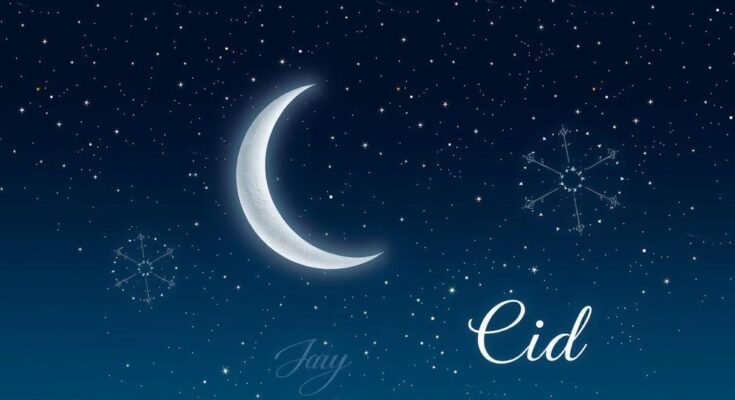In 2025, the celebration of Eid-ul-Fitr faces controversy as Saudi Arabia declares March 30 as the date, while UK experts contest this due to a solar eclipse. The New Crescent Society states that the crescent visibility on that day is scientifically impossible, leading to differing Eid celebrations globally. This annual division underscores the ongoing dialogue between traditional practices and modern astronomy, emphasizing unity in values during Eid despite diverse observances.
In 2025, the celebration of Eid-ul-Fitr has generated significant debate among the global Muslim community, particularly regarding the sighting of the Shawwal crescent. Saudi Arabia has declared that Eid will occur on Sunday, March 30, 2025, yet the New Crescent Society in the UK has contested this announcement, citing the scientific challenges of observing the crescent moon on that date due to the occurrence of a solar eclipse.
Historically, the Islamic calendar has depended on physical sightings of the moon to mark the onset of months, especially for important events like Ramadan and Eid. However, advancements in astronomical techniques provide reliable forecasts on crescent visibility, casting doubt on the Saudi claim, especially with a solar eclipse coinciding on the same day.
Experts argue that viewing a new crescent, soon after an eclipse, is virtually impossible. The UK New Crescent Society denounced the declaration as “controversial,” implying that it reflects a reliance on the predisposed Umm al-Qura calendar and not actual lunar visibility.
The New Crescent Society expressed concerns about potential divisions within the community, stating that the upcoming Eid is indicative of yet another instance where differing moonsighting methodologies will result in separate Eid celebrations. For Muslims in the UK, the 29th Ramadan will occur on March 30, with the crescent easily observable, leading many to observe Eid on March 31.
While devotees in the UK and those adhering to Morocco’s or South Africa’s moonsighting customs will celebrate Eid on March 31, the Saudi followers will celebrate on the previously announced date, despite skepticism around its accuracy. The traditional sighting practices and modern astronomic predictions highlight an ongoing struggle, as this discord perpetuates yearly.
The New Crescent Society noted that during the day of the predicted crescent sighting, an eclipse will take place, further complicating the sighting claims. They expressed a slight hope that Saudi Arabia might reconsider its position but deemed it unlikely. Regardless of the date of celebration, the Society urged Muslims to take part in the traditional practice of moonsighting, fostering unity and community amidst divergent observances.
The broader implications of this debate emphasize the dichotomy between tradition and modern science within the Muslim community’s calendrical practices. While discussions surrounding moonsighting continue, the essence of Eid remains a moment of joy, gratitude, and community engagement. Whether observed on March 30 or 31, the spirit of Eid persists: fostering togetherness and kindness, regardless of differing dates.
In conclusion, the celebration of Eid-ul-Fitr in 2025 has sparked a significant dialogue regarding lunar sightings, notably with Saudi Arabia’s controversial declaration taking center stage. This year’s division between various Islamic communities highlights the ongoing conflict between traditional moonsighting practices and scientific advancements. Nevertheless, the core value of Eid—a time for reflection and community—persists, urging Muslims globally to embrace the true essence of this profound occasion, regardless of the date they choose to celebrate.
Original Source: www.hindustantimes.com




